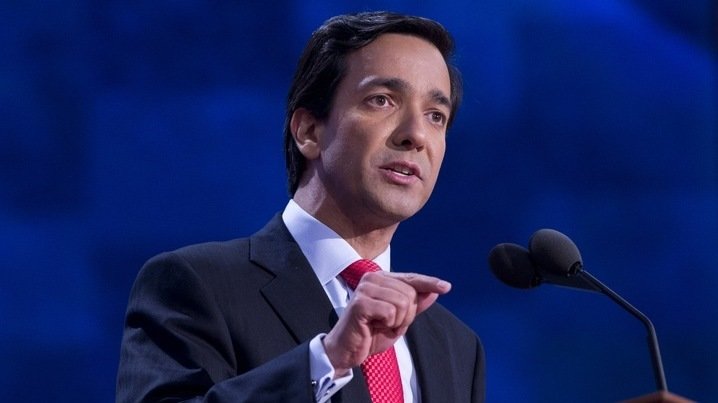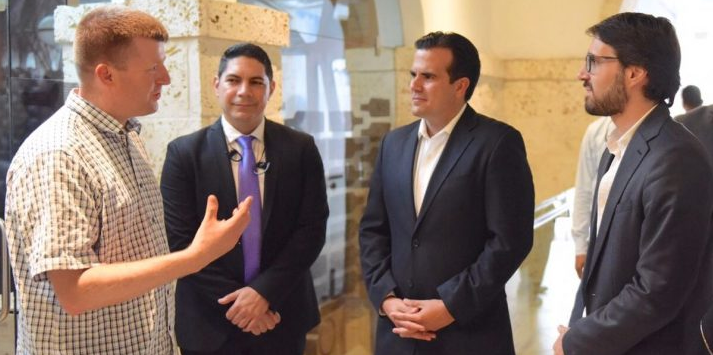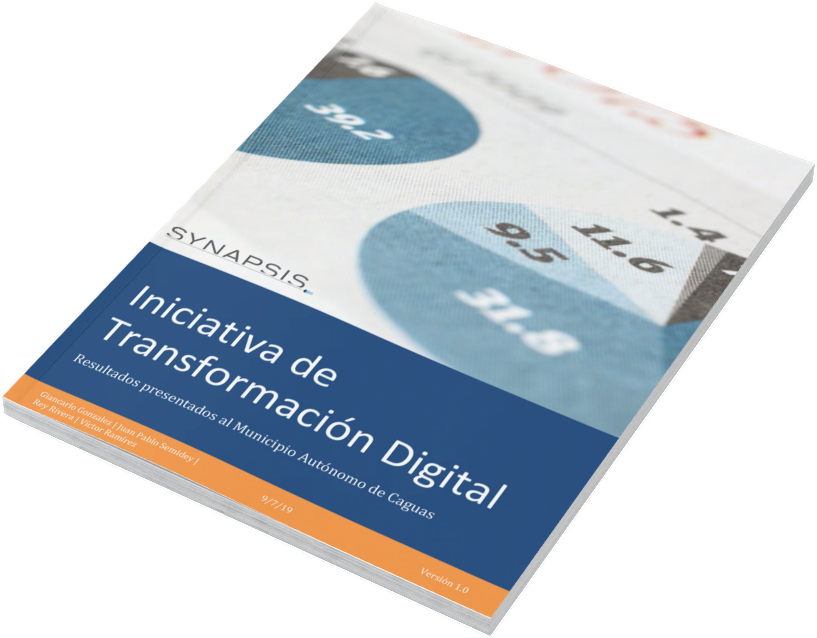Antes que renuncies
Scroll down for english version
Luego del Gobernador le solicitase la renuncia del secretario de Hacienda (parece hace una eternidad) cerré un ensayo sobre la oportunidad perdida con el Departamento de Hacienda con la frase: “Don’t waste a crisis”.
Al día siguiente de la salida de Maldonado, el 25 de junio, la legislatura aprueba el PC 749 para, y cito, “crear el Puerto Rico Innovation and Technology Service o PRITS, a fin de establecer y promover la política pública sobre la elaboración, manejo, desarrollo, coordinación e integración interagencial efectiva de la infraestructura tecnológica e informática del Gobierno de Puerto Rico, así como desarrollar de forma ordenada e integrada los proyectos tecnológicos puntuales necesarios para promover la integración efectiva de la tecnología a la gestión gubernamental.”
Esto tenía que haberse aprobado durante los primeros 100 días de administración. El malgasto ya está hecho; el mejor momento del cuatrenio ya pasó. No obstante, aprobarla ahora es un rayito de luz dentro de la radiación atómica que ocurre en el Gobierno hoy. Pasar una ley similar a esta era parte del plan de gobierno de Luis Fortuño y Alejandro García Padilla. Fortuño creó la Orden Ejecutiva 2009-09 que estableció el puesto de Chief Information Officer (CIO), pero nunca logró crearla mediante legislación. Lo considera uno de los principales fracasos de su administración. En este periodo fue nombrado Juan Eugenio Rodríguez como CIO.

Consecuente a Juan Eugenio, el puesto de CIO fue conferido a este servidor. Durante la transición, conversé con Juan Eugenio Rodríguez sobre los retos que enfrentó durante su ocupación. Me pasó una presentación que incluía una lista de ‘próximos pasos’ que recomendaba seguir a quien fuera su sucesor. De hecho, guardé la lista y la revisé en repetidas ocasiones durante mi incumbencia. Uno de los puntos de mayor importancia era lograr crear el puesto mediante ley.
Redactamos lo que se convirtió en el PS 614 y logramos aprobación por parte del Senado, en ese entonces presidido por Eduardo Bhatia. Aquí su recomendación y visto bueno por parte de la Comisión de Gobierno presidida por Angel Rosa. En la Cámara Baja, nunca tuve el apoyo del liderato en ese cuerpo. Con toda franqueza considero que esta es la pieza legislativa más importante del cuatrienio. Escribí lo siguiente sobre la importancia de esta estructura para controlar el gasto tecnológico – que ronda en los $600 millones por cuatrenio:
El reclutamiento de personal técnico en la Oficina de Gerencia y Presupuesto ha ido en declive desde mediados del 2014. Se han ido los jefes de Infraestructura y Ciberseguridad, dos salidas en Data Center (uno de ellos el único especialista en manejo de presupuesto) y dos en Gobierno Electrónico incluyendo el único programador. Para contrarrestar la pérdida de personal, han subcontratado las habilidades críticas delegando en consultoras y proveedores. A medida que OGP se desangra del conocimiento institucional, se vuelve progresivamente menos informada de los servicios que compra de esos suplidores. En poco tiempo, los funcionarios con poca experiencia en la especialidad que están comprando, recurren a los acuerdos continuos con los proveedores que parecían funcionar lo suficientemente bien la última vez, hasta donde saben. Así es como nacen los contratos de 4 años y 9 cifras, incrementando más de 20% mientras la capacidad interna se desvanece.
Luis Fortuño lo considera su mayor fracaso, al no haber podido pasar esta ley. Alejandro García Padilla la tenía en el plan del PPD y no ejecutó sobre ello. De hecho, y permítanme abundar un poco sobre esto, aunque agradezco sobremanera la oportunidad que me brindó Alejandro al colar en el gobierno un grupo de ‘hackers rebeldes’ con ganas de hacer las cosas de manera diferente a lo tradicional, cometió a su vez el gran error de desmantelar bajo orden ejecutiva el equipo de trabajo de ese entonces. Con ello, y con pleno conocimiento de lo que afirmo, se liquidó la estructura con el mejor equipo digital que pudo haber tenido un gobierno en Puerto Rico – y eso no lo digo yo, lo dice el US Digital Service.
En general, fui junto a mi predecesor, Juan Eugenio Rodríguez y mi sucesor, Luis Arocho, testigo de las limitaciones en ejecución y control sobre el gasto y desempeño de los servicios digitales y a su vez, como han sido coartados los esfuerzos para rediseñar y mejorar los servicios.
Sin embargo, lejos de dimitir, hemos insistido en el asunto y en el impacto de envergadura que esto tendría para Puerto Rico. Llevé el tema a la JUNTA fiscal, exhortándoles a que tomaran acción sobre la gobernanza digital o arriesgarse a no poder ejecutar sus objetivos. Trajimos a Tom Loosemore a conversar con Ricky Roselló y Natalie Jaresko. Hicimos todo lo posible por llevar el mensaje sobre la importancia y la urgencia de una sana política pública a nivel digital. Habia un interés en arreglar lo errado por parte de la previa administarción. Aquí presentamos un ‘timeline’ de la trayectoria de todo este esfuerzo, con el progreso (o falta de) a nivel local e internacional.

Tom Loosemore meets with Governor Rossello and CIO Luis Arocho 
Testimonio ante la junta fiscal 
Dear Fiscal Board en New America, Washington DC 
Tom Loosemore presenta sobre transformación digital 
Natalie Jaresko reacts to Tom Loosemore’s presentation
En fin, ha sido mucho el empeño dedicado a este esfuerzo. Soy fiel creyente de que la política pública no va a funcionar si la tecnología no funciona. Hoy día, lo digital está presente en todo lo que hacemos y en definitiva hemos demostrado con ejemplos concretos lo efectiva que puede ser esta oficina.
Aprobar el PC749 es un paso trascendental para abrir camino a lograr un gobierno capaz de controlar el gasto tecnológico con autoridad, defendiendo tanto a los servidores públicos como a los ciudadanos que esperan consumir servicios buenos y confiables. Es un paso hacia lograr reclutar el talento digital necesario para rediseñar servicios para que funcionen mejor a menor costo, mejorando constantemente su entrega hacia el ciudadano. Las plataformas digitales son infraestructura nacional, y es hora de que se reconozcan y se desarrollen con esta mentalidad, es así que vamos a lograr entregar servicios eficientes y confiables a nuestros ciudadanos.
Este proyecto ya ha sido aprobado en ambos cuerpos legislativos y firmado por ambos presidentes, solo falta una última firma. Su ejecución es pieza clave para quien intente construir un nuevo gobierno, íntegro y debidamente empoderado, capaz de responder a las necesidades de los ciudadanos en la era digital.
ENGLISH VERSION
Before You Resign
After the Governor requested the resignation of the Secretary of the Treasury (it seems an eternity ago) I wrote an essay on the lost opportunity with the Department of the Treasury, closing with the phrase: “Do not waste a crisis”.
The day after the departure from Maldonado, on June 25th, the legislature approved PC 749 to, and I quote, “create the Puerto Rico Innovation and Technology Service or PRITS, in order to establish and promote public policy on the elaboration, effective management, development, coordination and inter-agency integration of the technological and information infrastructure of the Government of Puerto Rico, as well as developing in an orderly and integrated manner the specific technological projects necessary to promote the effective integration of technology in government management. “
This is a ray of light within the atomic radiation emitted by the government on an hourly basis. Former governors Alejandro García Padilla and Luis Fortuño both had a law similar to this as part of their government plan. Fortuño created Executive Order 2009-09 that established the position of Chief Information Officer (CIO) but was unable to create it through legislation. He considers it one of the main failures of his administration. In this period Juan Eugenio Rodríguez was named CIO.
After Juan Eugenio, I had the honor of having the CIO position conferred to me. I remember my conversation with Juan Eugenio Rodríguez during the transition. We spoke about the challenges he faced during his occupation. He handed me a presentation that included a list of ‘next steps’ with recommendations to whoever was his successor. I kept the list and reviewed it repeatedly during my assignment. One of the most important points was to create the CIO position by law.
We drafted what became the PS 614 and we obtained approval from the Senate, at that time chaired by Eduardo Bhatia. Here are the recommendations and approval by the Government Commission chaired by Angel Rosa. I never had the support of the leadership in the lower chamber.
With all frankness, I consider this to be the most important piece of legislation for Rosselló, one that should’ve happened within the first 100 days. I wrote the following about the importance of this structure to control the technological expenditure, which is at around $600 million per administration.
The recruitment of technical staff in the Office of Management and Budget has been in decline since mid-2014. Gone are the heads of Infrastructure and Cybersecurity, in addition to two departures in Data Center (one of them the only specialist in budget management) and two in E-Government, including the only programmer. To counteract the loss of personnel, they have outsourced critical skills to consultants and suppliers. As OMB bleeds from institutional knowledge, it becomes progressively less informed about the services it purchases from those suppliers. In a short time, the officials with little experience in the specialty that they are buying, resort to the continuous agreements with the suppliers that seemed to work well enough the last time, as far as they know. This is how the contracts of 4 years and 9 figures are born, increasing more than 20% each renewal all the while internal capacity vanishes.
Luis Fortuño considers not passing this law one of his biggest failures. Alejandro García Padilla had it in the PPD plan and did not execute on it. In fact, and allow me to dwell a little on this…
I greatly appreciate the opportunity that Alejandro gave me to cast into our government a group of ‘rebel hackers’ wanting to do things differently from the traditional. We were rewarded with the great mistake of dismantling the team at that time. It was the most talented digital team the local government could have assembled. After our demise, the core team was recruited to the US Digital Service and it excelled at the highest levels – rated as one of the top digital teams!
I witnessed, along with my predecessor, Juan Eugenio Rodríguez and my successor, Luis Arocho, the limitations in the execution of digital work and control over contracting of services and, in turn, how efforts to redesign and improve services have been curtailed.
However, far from resigning, we have insisted on the matter and on the far-reaching impact that this would have for Puerto Rico. I took the issue to the Fiscal Board, exhorting them to take action on digital governance or risk not being able to execute their objectives. We have all witnessed how the board has been unable to execute on their objectives. We brought Tom Loosemore to talk with Ricky Roselló and Natalie Jaresko. We did everything possible to carry the message about the importance and urgency of a healthy public policy on a digital level. There was an interest in fixing the erroneous part of the previous administration. Here we present a ‘timeline’ of the trajectory of all this effort, with the progress (or lack of) at local and international level.
In short, much effort has been devoted to this effort. I am a faithful believer that public policy will not work if the technology does not work. Nowadays, digital is present in everything we do and we have definitely demonstrated with concrete examples of how effective this office can be.
Approving bill PC749 is a transcendental step to open the way to building a government capable of controlling technological spending with authority, defending both public servants who provide and citizens who consume those services. It is a step towards recruiting the necessary digital talent to redesign services so that they work better at a lower cost, constantly improving their delivery to the citizen. Digital platforms are national infrastructure, and it is time that they are recognized and developed with this mentality, that is how we are going to achieve to deliver efficient and reliable services to our citizens.
This project has already been approved in both legislative bodies and signed by both presidents, just missing one last signature. Its execution is a key piece for anyone trying to build a new government that responds to the needs of citizens in the digital era.

